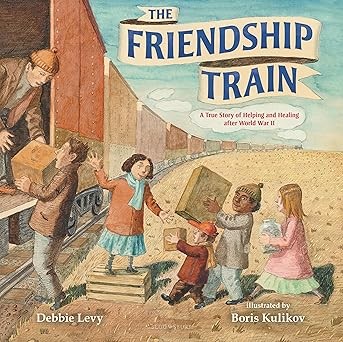
This 2020 book is a must-have for forest school programs but actually for every K-4 classroom. The front cover of this book captures the essence: Words disappear if we don’t share them when we talk. If we don’t write them in our stories. If we don’t read them in our books. If we don’t use words, they can be forgotten. And if they’re forgotten. . .they disappear. In this tender, yet provocative story, children go on a journey with Brook and her grandmother, Mimi. Mimi is a writer who ‘weaves words into everything that matters.’ (This book contains memorable language that should be shared and wondered as a class. After all, it is a book about words.). The story unfolds as Mimi and Brook go in search of something for show and tell and to help her understand how she will become The Keeper of Wild Words. Together Mimi and Brook wander through the natural world to discover the words on Mimi’s list—the wild words that are in danger of disappearing. The last word on Mimi’s list is Brook and finally they find the Brook (the author’s name is Brooke).
The author’s note is an important feature of this book. In it the author shares that this book was inspired by an article that astounded her. The Oxford Junior Dictionary does, in fact, remove words because they are no longer relevant. Over 100 natural words were recently removed and replaced with words such as drought, negotiate, vandalism. These words of an ugly and broken world replaced the beautiful natural words that unfold in the story. The author almost closes the book with the words, “I hope every one of us will be Keepers of Wild Words.” It seems like the end when she writes, “With love, Brooke.” But wait, there is more. Don’t miss it. There is a page that is actually an envelope. On the front of the envelope are the words, “You can be a keeper too. Your wild words will stay safe inside this envelope.” Now, take your class and go in search of wild words that they want to preserve by talking with them, writing with them, reading about them, and sharing them with others. This book begs for interaction. I think I could read this book every day for a month with my students before we go on our daily search for wild words we want to save.
Another idea I have for this book is to share the dedication written by the author. The book is dedicated to Mary Oliver. Mary Oliver was a nature poet. I would have the students get acquainted with her poetry and have discussion about why the author dedicated the book to her.
About the Author
Brooke Smith is a poet and children’s book author. In this book she treats children with profound respect and urges them to do something as a result of reading the book. Children might like to know that her writing studio overlooks a meadow and she gazes out to see many of the wild words she cherishes.
About the Illustrator
If I were teaching this book I would want the children to also attend to the beautifully rendered illustrations by an artist who also loves wild words. Madeline goes hiking to explore wild landscapes. She writes that she especially likes the way porcupines waddle and when ferns cover the forest floor. I would have children share in talking, writing, and illustrating how they appreciate the wild world and what especially intrigues them. We would turn these pages into our own book of wild words.
Teaching Points: Intergenerational discussions, exploring where authors get ideas for books, conservation, as well as the ideas provided in Synopsis of the Book
Pathways Themes: Environment, Personal Feelings & Growth
Reviewed by Krystal Bishop, EdD
Professor of Education
Southern Adventist University


Author: Debbie Levy